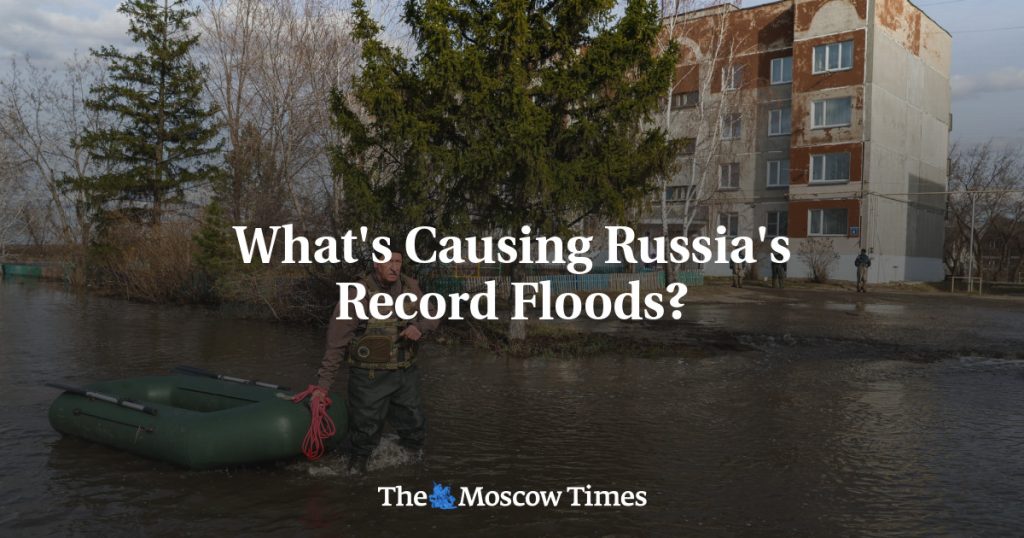Devastating floods have hit parts of Russia and Kazakhstan, forcing tens of thousands of people to flee from rising waters. These floods are some of the worst in decades, with the region experiencing record-breaking water levels. Spring floods are common in this part of the world, but the current disaster has surpassed all previous records. The Ural River in Russia’s Orenburg region and the Ishim River in northern Kazakhstan have both experienced significant flooding, driven by warm spring weather causing a rapid melt of winter snow.
The excessive snowfall in the winter months, followed by a sudden increase in temperatures as spring arrived, created the perfect conditions for severe flooding in the region. Climate scientists attribute about half of all floods in the area to the rapid melt of snow, with additional contributions from rainfall and ice blockages in rivers. While there is no clear trend towards more frequent floods in this particular region, global warming and climate change are likely contributing factors to the severity of these floods.
The impact of a warmer planet on the conditions that lead to more intense flooding is a growing concern. The decrease in snow cover in the northern hemisphere since the late 1970s, coupled with rising temperatures, is expected to increase the likelihood of more frequent and severe spring floods. Regional variations in snowfall trends are expected, with heavier but shorter-lived snowfall forecast for parts of Russia and Kazakhstan. These changes, along with human influences such as dam failures and improper land development, are contributing to the unprecedented scale of the current flooding.
The burst of a dam in Orsk, near Kazakhstan’s border, exacerbated the flooding in the region, causing thousands of homes to be inundated. Negligence and safety violations during the construction of the dam have led to an investigation into the causes of the catastrophic failure. In Orenburg, urban development in flood-prone areas has also worsened the impact of the floods. While nature plays a significant role in these disasters, human influences such as improper dike construction and building in flood zones have exacerbated the situation.
Given the unpredictability of natural disasters and the potential impacts of climate change on extreme weather events, the need for better infrastructure planning and disaster preparedness in flood-prone regions is crucial. Mitigating the impact of floods through improved dam safety, land use planning, and early warning systems can help protect communities from the devastation caused by severe flooding. As weather patterns continue to change and global temperatures rise, the risk of more frequent and intense floods in regions like Russia and Kazakhstan will likely increase, highlighting the importance of proactive measures to address the growing threat of flooding.


